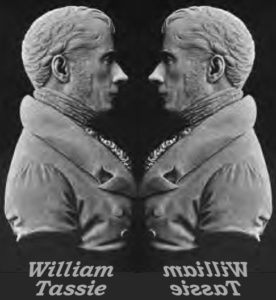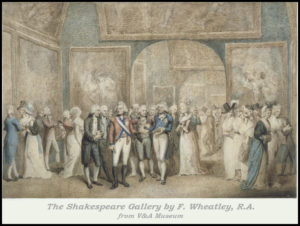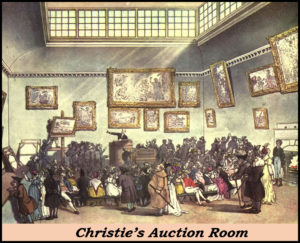 I often wonder how factual the information is that I find in older books and magazines about individuals and incidents that lived or happened tens, hundreds or even thousands of years before the publication was printed. To my dismay, I think I might have found an indication.
I often wonder how factual the information is that I find in older books and magazines about individuals and incidents that lived or happened tens, hundreds or even thousands of years before the publication was printed. To my dismay, I think I might have found an indication.
I recently ran into two articles, both about William Tassie, the nephew of James Tassie, the engraver, and an engraver and modeler in his own right . The articles were written about 100 years after the occurrence that they each describe, one in 1907 and one in 1926. They were written by two different authors in two totally different publications.
Draw your own conclusions.
From: “The Gems & Portrait Medallions of James & William Tassie” an article by Martin Hardie in “The Collector” magazine 1907 pp. 132-135
“….an interesting episode in the life of William Tassie, which shows how generosity and good-nature met with a strange reward. It will be remembered that one of Alderman Boydell’s most prodigious undertakings was the formation of an immense collection of pictures painted by the most eminent English artists in illustration of Shakespeare. For these he built in 1789 a gallery  on the site of Dodsley’s publishing house in Pall Mall. It was his intention to bequeath this to the public, but his business was so seriously affected by the disastrous consequences of the French revolution that he obtained permission of Parliament to dispose of his collection by lottery.
on the site of Dodsley’s publishing house in Pall Mall. It was his intention to bequeath this to the public, but his business was so seriously affected by the disastrous consequences of the French revolution that he obtained permission of Parliament to dispose of his collection by lottery.
“There came one day a poor artist to William Tassie, bemoaning his folly in having invested a much-needed guinea in a ticket for Boydell’s lottery. Tassie, after lecturing his visitor on the folly of his extravagance, paid the guinea, and became the owner of the ticket. When the lottery was drawn on Jan. 28, 1805, out of the 12,000 tickets sold Tassie’s bore the fortunate number, and he became possessor of the Shakespeare Gallery and all its contents. The pictures were disposed of by auction, and the building itself was sold to the British Institution. The sculptured ‘Apotheosis of Shakespeare,’ by Banks, was destined to be a monument over Boydell’s tomb, but ultimately went to Stratford-on-Avon, where also a large number of the Boydell pictures are to be seen. How few people know that they were once the property of William Tassie, modeller and engraver of gems.”
From: “CHRISTIE’S, 1766 to 1925“, By H. C. Marillier, 1926, pp 20-21.
“In 1806, pictures by English masters, had been raffled in a lottery by the owner, and won by one Tassie, a gem-engraver. Tassie’s behavior is a homily on the subject of greed. In the first place the winning ticket really belonged to Caldwell, the engraver, and that easy-going person had allowed Tassie to have it instead of his own. Next Tassie was offered £10,000 for his prize, and refused it, demanding not less than £23,000. Thirdly, having insisted on putting the pict ures up to auction at Christie’s, he only got a trifle over £6,000 for them and had to pay the auctioneer’s commission out of that.”
ures up to auction at Christie’s, he only got a trifle over £6,000 for them and had to pay the auctioneer’s commission out of that.”
“Note: Three pictures by Benjamin West from this collection are now in the Philadelphia Museum. Other pictures, bought by Lord Egremont, are at Petworth.”
What do you think?
Leave a Reply